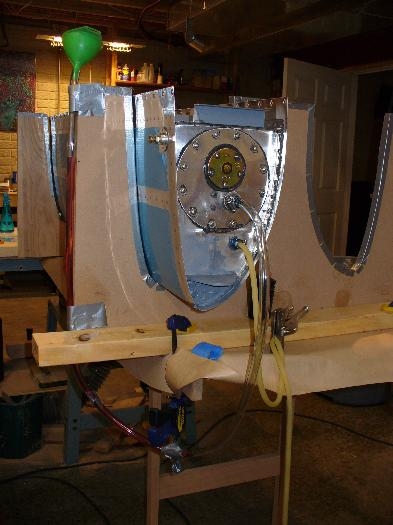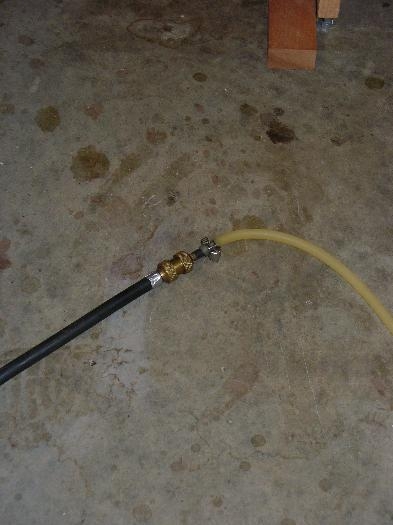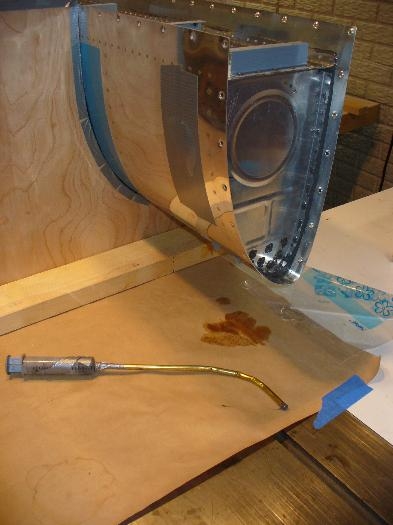
|

|
|

|
Serenity

|
Date: 2-10-2007
|
Number of Hours: 3.00
|
Manual Reference:
|
Brief Description: Fuel tank leak test
|

|
Well, today was the big leak test to check the tank. A small amount of pressure is introduced to see if it leaks out anywhere both by gauging an inflated balloon vs. making a manometer. I chose the latter - some tubing from the local Menard's Aircraft Supply (1/2" ID for the fuel line nipple, and 3/8" ID for the vent line nipple, but I used 1/4" rubber tubing here). In pic 1 is the assembly - the manometer tubing placed in a 'U' shape and taped to the tank support, then I added water with red dye via the green funnel. I attached the tubing to the nipple with a little grease and a small hose clamp. The vent line had the rubber tube connected, and on the other end I clamped on a bicycle innertube valve. I then sealed the fuel cap opening with dict tape, and pumped the tank with a bike pump until the water was pushed up 12 inches (per Dan Checkoway's suggestion at www.rvproject.com). Had a quick leak - culprit was the duct tape not sealing. Fixed that - still a leak! Sprayed soapy water all over - found the leak at the outboard rib end to rear baffle seal - muck of it was bubbling away. I likely forgot to slather it up with sealant before assembly. So, how to fix it?? It is always better to seal from within, but the tank is closed up. After a little mental masturbation, I came up with the rig in pic 3 - a 35cc syringe attached to some brass tubing that I bent so it will slide into the fuel cap opening and I can caulk the seam. It was very difficult to push the thick as tar sealant through, but it worked great. I closed off the cap opening with duct tape, and re-pressurized the tank - NO LEAKS!! Glad to have that over. Now, I have heard you only need 1/2 PSI to test, so how much with pushing a 12 inch column of water in a 1/2"ID tube? Pi R squared X 12 " gives 2.4 cu inches of volume, and .09 lbs weight on a 0.2 sq inch footprint (water weighs 62.4 lbs/cu ft). That works out to 4.5 PSI if my math is correct, so more than enough to check the tank (in fact, one does not want to pressurize it too far).
|

|

Manometer set up
|

|

bike pump attached to the innertube valve clamped to the 1/4" rubber hose
|

|

My homemade sealant caulk "gun". The problem area was the upper horiz edge of the tank in the pic.
|

|
|

|

|

|
|

|

|
Copyright © 2001-2024 Matronics. All Rights Reserved.
|

